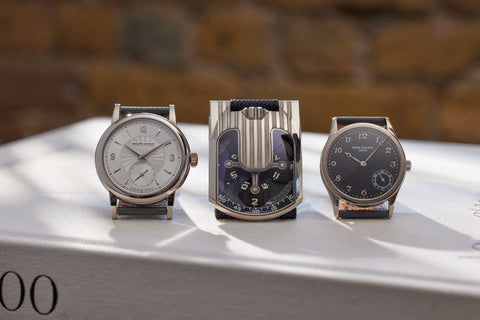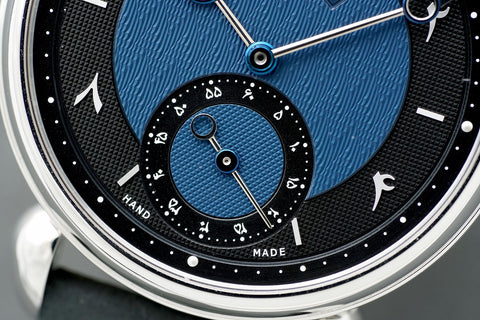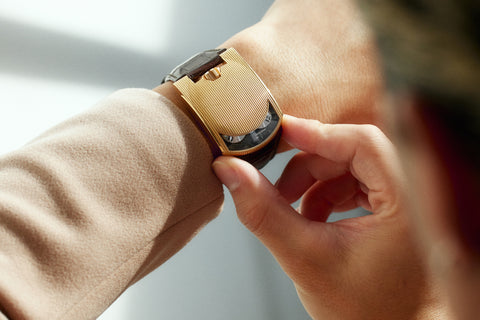A student of the L'École d'Horlogerie de Paris and the École Technique de Vallée de Joux, Viot followed it up with a course in restoration from the Musée International d'Horlogerie in La Chaux-de-Fonds. It laid the basis for his appreciation for the works of masters such as Jean-Antoine Lépine as well as those of Abraham-Louis Breguet and he returned to Paris and began working in the restoration workshop of Daniel Gendron. He returned to Switzerland a few years later to work at Haut de Gamme, a specialist manufacturer that produced complications such as perpetual calendars and modular calendar complications for brands including Patek Philippe and Breguet, before moving in-house with the latter brand. It was during this period that he was deeply involved in the restoration of Breguet timepieces from the 18th and 19th centuries. When his role at Breguet’s was relocated to Switzerland, Viot decided to instead remain in Paris and create watches with a distinctly French countenance under his own name.
It resulted in this prototype of the Chronomètre à Paris. First revealed at the Salon Belles Montres in Paris in 2009, it preceded the small serial production in which Viot crafted no more than seven other examples of the same design. Like most of his work, it was conceptualised with little more than a pencil, a piece of paper, line-drawer and a calculator. It features a 38mm white gold case with a three-part construction. The polished, rounded bezel and display caseback, sandwiches a brushed midcase, with precious metal hallmarks on the left hand flank of the case. The brushed lugs are stepped from and screwed on to the case. The idea behind this kind of construction is to afford watchmakers the ability to swap out the lugs in the future, should they be worn down or if the owner desires new lugs fashioned from another metal. In fact, this kind of serviceability is a recurring motif in the concept behind the watch.
The open dial-side appearance is influenced by the sort of layout championed by Lépine. It is based on a vintage, chronometre-grade Peseux 260 calibre, and borrows wheels and the escapement from it. The rest of the calibre, crafted from German silver, brass, gold, and stainless-steel, is entirely of Viot’s own design. On the outside is a blued chapter with gilt-shaded minute plots. Several of the bridges crafted from stainless steel - including the balance bridge – are heat-hued. Others crafted from German silver – such as the one that hosts the mainspring and escapement bridge – wear traits brouillés. It gives the watch a soft, warm appearance. The mainspring bridge features the brand mark and “À Paris” hand etched in a suitably classical style. Contrasting finishes on the screws further enhance the visual interest of the dial-side. The balance wheel is visible on both sides. Sitting on top of it, on the dial side, is the escapement.
The semi-circular subsidiary seconds chapter, similarly adorned as the minutes chapter, has a double-armed arrow-tipped hand that is heat-blued. The hours and minutes hands, while similar in form, are in the natural colour of the metal. In fact, barring the heat-treated parts, none of the metals used have been treated with any coating. Theo Auffret, who apprenticed at Viot’s workshop, employs a similar aesthetic inspired by the French masters.
The movement-side is dominated by German silver plates finished with traits brouillés, except for the bridge that secures the balance. Heat-blued screws add pops of colour to the aesthetic. A gold plaque bearing the serial number “00” is affixed at the 6 o’clock position.
The watch comes with two sets of alligator-style grained leather straps, in blue and black, that go on the 19mm wide lugs. The straps are secured by a centre-bar buckle, finished with traits brouillés. It comes with hand drawings and instructions for the buckle, as well as schematics of the presentation box. The À Paris prototype represents not just a distillation of several centuries of French watchmaking aesthetics but a rare instance of a piece produced by traditional methods to modern standards.

























































































































































































































